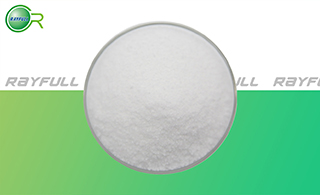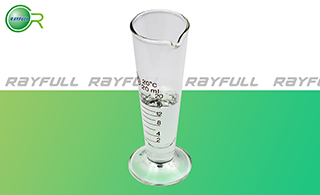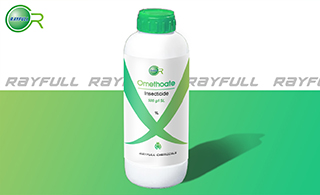Omethoate
    СхАЦ№ы СхАЦ№ы
Introduction: Omethoate is a systemic organophosphorus (OP) insecticide and acaricide used to control insects and mites in horticulture and agriculture, as well as in the home garden. Along with other pesticides of this class, its mode of action is through inhibition of acetylcholinesterase activity. This inhibition results in the over-stimulation of those parts of the nervous system that use acetylcholine to transmit nerve impulses.
Common name: Omethoate
Another name: Dimethoxon; Folimat; PO-Dimethoate; Dimethoate O-analog; O-methoate; omethoate; etc.
Chemical Name (IUPAC): 2-dimethoxyphosphinoylthio-N-methylacetamide
Structural formula:

Empirical formula: C5H12NO4PS
Mol. Weight: 213.2
CAS No.: 1113-02-6
Specifications
Leading Omethoate supplier
Omethoate 80% TC
Omethoate 500 g/l SL
Omethoate 40% EC
Packing
BULK PACKING
Powder: 25KG/Bag, 25KG/Drum, 50KG/Drum etc.
Liquid: 200L/Drum, 20L/Drum, 10L/Drum etc.
SMALL PACKING
Powder: 1kg/Alu bag, 500g/Alu bag, 200g/Alu bag, 100g/Alu bag, 50g/Alu bag, 15g/Alu bag etc.
Liquid: 5L/Drum, 1L/Bottle, 500ml/Bottle, 250ml/Bottle, 100ml/Bottle, 50ml/Bottle etc.
Customerized Packing label
Omethoate FAO standard
Professional registration
HAZARDS IDENTIFICATION
Hazard statement(s)
H300: Fatal if swallowed.
H301: Toxic if swallowed.
H311: Toxic in contact with skin.
H312: Harmful in contact with skin.
H400: Very toxic to aquatic life.
Precautionary statement(s)
P264: Wash hands thoroughly after handling.
P273: Avoid release to the environment.
P301+P310: IF SWALLOWED: Immediately call a POISON CENTER or doctor/physician..
P312: Call a POISON CENTER or doctor/physician if you feel unwell.
P501: Dispose of contents/container as hazardous waste.
Supplemental Hazard Statements: none.
MAMMALIAN TOXICOLOGY
Acute toxicity: 1) Acute oral LD50 for rats is 50 mg/kg. 2) Acute percutaneous LD50 for rats is 145 mg/kg. 3) Acute inhalation toxicity LC50 (4 h) for rats is 0.3 mg/l. 4) Skin irritation: Non-irritating to skin (rabbits). 5) Eye irritation: Slightly irritating to eyes (rabbits). 6) Skin sensitization for guinea pig: Not a skin sensitiser.
NOEL: NOEL (2 y) for rats is 0.3 mg/kg/day, for mice is 2.1 mg/kg/day; NOEL (1 y) for dogs is 0.025 mg/kg/day. Other Not mutagenic.
ADI (JMPR) withdrawn [1996].
Classification:
WHO Classification: Ib (Highly hazardous)
EC Risk Classification: T - Toxic: R25; Xn - Harmful: R21; N - Dangerous for the environment: R50.
US EPA Classification (formulation): I (Danger - Highly toxic)
ECOTOXICOLOGY
Effect on birds: Acute oral LD50 for Bobwhite quail is 9.9 mg/kg. Effect on fish: Acute LC50 (96 h) for Rainbow trout is 9.1 mg/l. Effects on aquatic invertebrates: Acute EC50 (48 h) for Daphnia magna is 0.022 mg/l. Effects on algae: Acute EC50 (72 h) for Scenedemus subspicatus is 167.5 mg/l. Effects on bees: Oral acute (48 h) LD50 is 0.048 ҰМg/bee. Effects on earthworms: Acute 14 day LC50 is 46 mg/kg.
ENVIRONMENTAL FATE
Animals Omethoate is not accumulated in animal tissues or fat. The main metabolites in the urine are O-demethylomethoate and N-methyl-2-(methyldithio)acetamide. Plants Omethoate is rapidly taken up by plants. Demethylation and hydrolysis of P-S bonds are the main metabolic steps. The main metabolites are 3-hydroxy-3-[(2- methylamino-2-oxo-ethyl)thio]propionic acid and its oxidation products. Soil/Environment Omethoate has a relatively high mobility in soil but is very rapidly metabolised; DT50 only a few days. The main metabolite is CO2. Aged leaching studies revealed that metabolites have only a low leaching potential.
Usage: Omethoate was developed by Bayer Crop Science. Omethoate is An insecticide and acaricide to control a wide range of pests on fruit, hops and other crops. It is also a pesticide transformation product.
Application: Biochemistry Cholinesterase inhibitor. Mode of action Systemic insecticide and acaricide with contact and stomach action. Uses Control of spider mites, aphids (including woolly aphids), beetles, caterpillars, scale insects, thrips, suckers, frit flies, etc. on fruit, hops, cereals, rice, potatoes, ornamentals, and other crops. Application rates vary from 35 to 1000 g/ha, depending on crop, pest, pest stage and application method. Phytotoxicity May be phytotoxic to some varieties of peach.
| 






